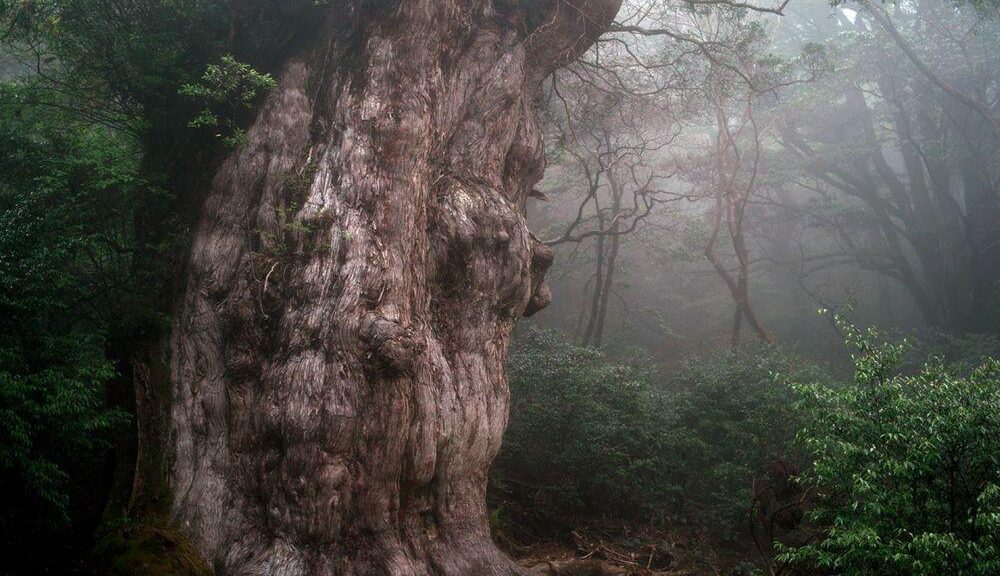The World’s 10 Oldest Living Trees
There are colonies of trees which have lived for millions of years. These trees are the eyewitness of emergence and decline of civilisations. Here we are covering the top 10 oldest trees of the whole world. Let’s have a look.
10. Chestnut Tree of One Hundred Horses

This tree, located on Mount Etna in Sicily, is the largest and oldest known chestnut tree in the world. Believed to be between 2,000 and 4,000 years old, this tree’s age is particularly impressive because Mount Etna is one of the most active volcanoes in the world.
The tree sits only 5 miles from Etna’s crater. The tree’s name originated from a legend in which a company of 100 knights were caught in a severe thunderstorm. According to the legend, all of them were able to take shelter under the massive tree.
9. Jōmon Sugi

Jōmon Sugi, located in Yakushima, Japan, is the oldest and largest cryptomeria tree on the island and is one of many reasons why the island was named a UNESCO World Heritage Site.
The tree dates to at least 2,000 years old, but some experts believe it could be older than 5,000 years old. Under that theory, it’s possible that Jōmon Sugi is the oldest tree in the world — even older than Methuselah and its brethren. Regardless of the numbers, it’s a tree that deserves mention here.
8. Olive Tree of Vouves

This ancient olive tree is located on the Greek island of Crete and is one of seven olive trees in the Mediterranean believed to be at least 2,000 to 3,000 years old.
Although its exact age cannot be verified, the Olive Tree of Vouves might be the oldest among them, estimated at over 3,000 years old. It still produces olives, and they are highly prized. Olive trees are hardy and drought-, disease- and fire-resistant — part of the reason for their longevity and their widespread use in the region.
7. The Senator

Though the Senator suffered tragedy in 2012 after a fire caused much of the tree to collapse, this iconic tree bears mentioning here. Formerly located in Florida, the Senator was the largest bald cypress tree in the United States and was widely considered the oldest of its species known to exist. It was also likely the largest U.S. tree of any species east of the Mississippi River. Estimated to have been around 3,500 years old, the Senator was used as a landmark for the Seminole Indians and other native tribes.
The Senator’s size was particularly impressive because it endured many hurricanes, including one in 1925 which reduced its height by 40 feet. The tree got its name from Sen. M.O. Overstreet, who donated the tree and surrounding land in 1927.
6. Patriarca da Floresta

This tree, an example of the species Cariniana legalis named Patriarca da Floresta in Brazil, is estimated to be over 2,000 years old, making it the oldest non-conifer in Brazil.
The tree is believed to be sacred, but its species is widely threatened due to forest clearing in Brazil, Colombia and Venezuela.
5. Alerce

The Alerce is a common name for Fitzroya cupressoides, a towering tree species native to the Andes mountains. There’s almost no telling how old these trees can get since most of the larger specimens were heavily logged in the 19th and 20th centuries.
Many botanists believe they are the second-longest living trees on Earth aside from the bristlecone pine of North America. To date, the oldest known living specimen is 3,646 years old and is appropriately called Grand Abuelo.
4. Llangernyw Yew

This incredible yew resides in a small churchyard of St. Dygain’s Church in Llangernyw village, north Wales. About 4,000 years old, the Llangernyw Yew was planted sometime in the prehistoric Bronze Age — and it’s still growing! In 2002, in celebration of the golden jubilee of Queen Elizabeth II, the tree was designated as one of 50 Great British trees by the Tree Council.
3. Sarv-e Abarqu

Sarv-e Abarqu, also called the “Zoroastrian Sarv,” is a cypress tree in Yazd province, Iran. The tree is estimated to be at least 4,000 years old and, having lived through the dawn of human civilization not far away, it is considered an Iranian national monument. Many have noted that Sarv-e Abarqu is most likely the oldest living thing in Asia.
2. Methuselah

Until 2013, Methuselah, an ancient bristlecone pine was the oldest known non-clonal organism on Earth. While Methuselah still stands as of 2016 at the ripe old age of 4,848 in the White Mountains of California, in Inyo National Forest, another bristlecone pine in the area was discovered to be over 5,000 years old.
Methuselah and its unnamed senior pine’s exact locations are kept a close secret in order to protect them. You can still visit the grove where Methuselah hides, but you’ll have to guess at which tree it is. Could this one be it?
1. Old Tjikko

Old Tjikko is a 9,550-year-old Norway spruce, located on Fulufjället Mountain of Dalarna province in Sweden. Old Tjikko originally gained fame as the “world’s oldest tree.” Old Tjikko is, however, a clonal tree that has regenerated new trunks, branches and roots over millennia rather than an individual tree of great age. Old Tjikko is recognized as the oldest living Picea abies and the third oldest known clonal tree.
The age of the tree was determined by carbon dating of genetically matched plant material collected from under the tree, as dendrochronology would cause damage.
The trunk itself is estimated to be only a few hundred years old, but the plant has survived for much longer due to a process known as layering (when a branch comes in contact with the ground, it sprouts a new root), or vegetative cloning (when the trunk dies but the root system is still alive, it may sprout a new trunk).
